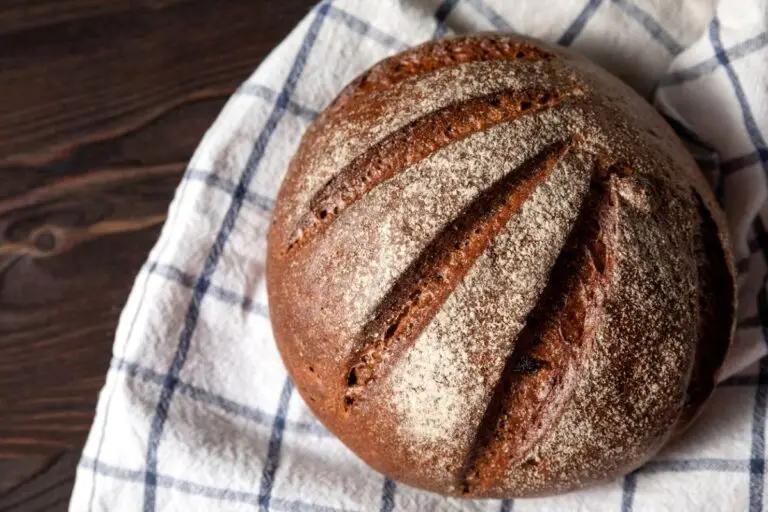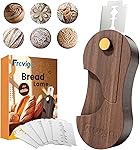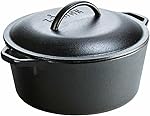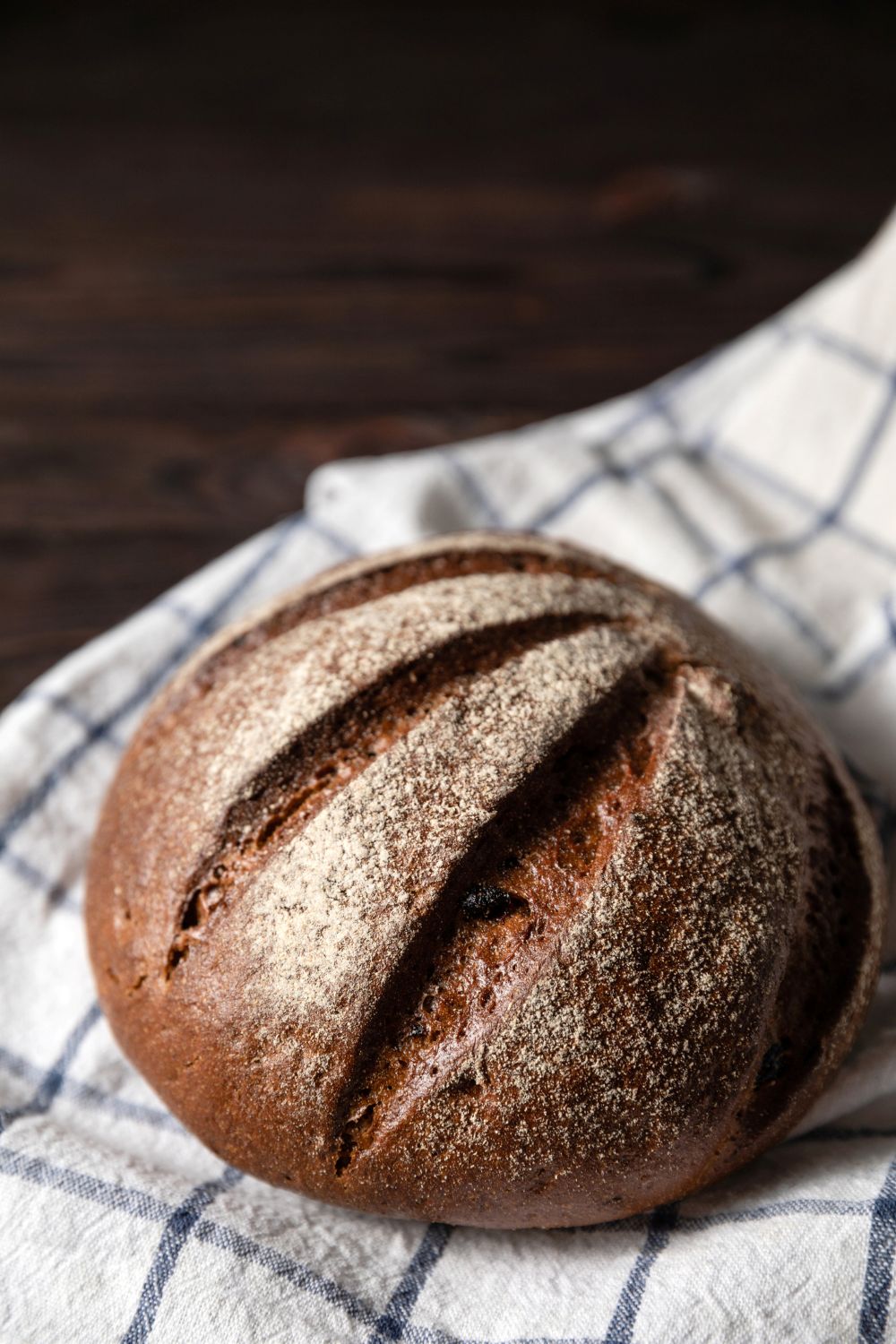This old world dark pumpernickel bread recipe delivers authentic German flavor using a sourdough pre-starter and simple ingredients you likely already have. The two-day fermentation creates a deep, complex taste without fancy equipment or special flours. Make one dense, hearty loaf perfect for pairing with cold beer and funky cheeses.
German bakers have been making this bread for centuries in village bakeries with nothing more than rye flour, coffee, and patience. No stand mixer required, though it helps if you'd rather not spend 15 minutes getting an arm workout. The result is a legitimately dark, flavorful loaf that doesn't need anything fancy on it - just butter.
I spent 15 years in Germany watching real bakers pull loaves like this from brick ovens. The smell of molasses and caraway hitting hot cast iron is something you don't forget. This recipe replicates that without needing a $3,000 steam-injected oven or a degree in German.
What Makes Old World Pumpernickel Different

Old World Pumpernickel Bread Recipe
This authentic German-style dark pumpernickel bread uses a natural sourdough pre-starter, brewed coffee, and molasses to create a dense, flavorful loaf with deep color and complex taste. The two-day fermentation process develops rich flavors that make this bread perfect for pairing with sharp cheeses, cold beer, or simply butter. No special equipment needed beyond a stand mixer and a Dutch oven for the best results.
- Total Time: 2 hours 25 minutes
- Yield: 12 servings 1x
Ingredients
- 1/2 cup rye flour
- 1/2 cup warm water
- 1/8 teaspoon granulated sugar
- 4 cups bread flour, divided
- 2 cups rye flour (or whole wheat flour)
- 3 tablespoons unsweetened cocoa powder (or dark malt powder)
- 3 tablespoons granulated sugar
- 3 teaspoons salt
- 2 teaspoons caraway seeds
- 1 1/2 teaspoons onion powder
- 2 packages (14g total) active dry yeast
- 1 1/2 cups plus 2 tablespoons brewed coffee, cooled to lukewarm (105-115°F)
- 4 tablespoons virgin olive oil
- 4 tablespoons dark molasses
- Sourdough pre-starter (prepared 2 days ahead)
Instructions
For the Sourdough Pre-Starter (Make 2 Days Ahead):
- In a glass jar, combine 1/2 cup rye flour, 1/2 cup warm water, and 1/8 teaspoon sugar. Mix thoroughly with a fork or rubber spatula until no dry flour spots remain.
- Cover jar with cheesecloth or screen (not a sealed lid). Let sit at room temperature (70°F/21°C) for 2 days to gather natural airborne yeast. The mixture will bubble slightly and develop a yeasty aroma.
For the Bread:
- In a stand mixer bowl, combine 1 cup bread flour, cocoa powder, 3 tablespoons sugar, salt, onion powder, caraway seeds, and yeast. Whisk to combine.
- Add the sourdough pre-starter, lukewarm coffee, olive oil, and molasses to the flour mixture. Mix with paddle attachment on medium speed for 4-5 minutes until thoroughly combined.
- Switch to dough hook attachment. Add 1 cup rye flour, then gradually add remaining rye flour and bread flour until dough forms and becomes firm (not sticky). Knead on medium speed for 5-7 minutes until smooth and elastic.
- Place dough in a lightly oiled bowl and turn to grease the top. Cover with a clean kitchen towel. Let rise in a warm place (75-78°F) for about 1 hour or until doubled in size.
- Turn dough onto a lightly floured surface and punch down to remove air bubbles. Shape into a round loaf.
- Place shaped dough on a lightly greased cookie sheet or in an 8-inch layer cake pan. For best results, use a 5-quart cast iron Dutch oven with the lid prewarmed to 130°F/55°C. Cover and let rise in a warm place for 30-40 minutes.
- Preheat oven to 400°F (205°C).
- Using a sharp knife or bread lame, cut 3-5 parallel lines about 1/4 inch (6mm) deep across the top of the loaf to prevent splitting during baking.
- Bake for 30-35 minutes until the internal temperature reaches 200-205°F and the crust is very dark brown. The bottom should sound hollow when tapped.
- Remove from pan or Dutch oven immediately. Place on a cooling rack for at least 45 minutes before slicing.
Equipment

Retractable Bread Lame Scoring Tool
Buy Now →
Lodge 5 Quart Cast Iron Dutch Oven With Lid
Buy Now →- Prep Time: 20 minutes
- Cook Time: 30-35 minutes
- Category: Bread
- Method: Baked
- Cuisine: German
Nutrition
- Serving Size: 1 slice
- Calories: 312
- Sugar: 7g
- Sodium: 590mg
- Fat: 5.8g
- Carbohydrates: 58.2g
- Fiber: 5.1g
- Protein: 9.5g
How To Make the Best Old World Pumpernickel
Variations, Serving Ideas, and Storage
Recipe Variations
Frequently Asked Questions
Yes, knead by hand for 10-12 minutes instead of using a dough hook. The dough will be stiff, so you'll get an arm workout that might make you reconsider your life choices. Knead until the dough is smooth and elastic; it should spring back slowly when poked.
Dense is expected for pumpernickel, but if it's brick-like and could double as a doorstop, you either over-kneaded, didn't let it rise long enough, or used expired yeast. Check your yeast activation; it should foam within 10 minutes of mixing with warm water. If nothing happens, your yeast is dead, and no amount of hoping and wishing will bring it back.
Yes, use the same amount but mix it directly with the dry ingredients instead of activating separately. The rise times will be slightly shorter. Check at 45 minutes instead of one hour. Instant yeast is basically the overachiever of the yeast world.
Whole wheat flour is the closest substitute and maintains the hearty texture. The flavor will be less earthy and complex, but it works if you're in a pinch. Don't use all-purpose flour for the rye portion because you'll lose the density that defines pumpernickel, and you'll just end up with weird brown bread.
Internal temperature should read 200-205°F on an instant-read thermometer. The crust will be very dark brown (almost black in spots) and sound hollow when tapped on the bottom. If it sounds like you're knocking on solid wood, give it another 5 minutes.
Too much cocoa powder or burnt molasses causes bitterness. Measure cocoa powder precisely. 3 tablespoons maximum, not 3 heaping tablespoons. Also, if your oven runs hot, the molasses can caramelize past the point of sweetness into bitterness. Use an oven thermometer to verify 400°F because oven controls are notorious liars.
Pumpernickel contains whole rye flour, which provides more fiber and nutrients than white bread. The longer fermentation makes it easier to digest and doesn't spike your blood sugar as dramatically. One slice contains approximately 312 calories, 58g carbohydrates, 9.5g protein, 5.8g fat, and 5.1g fiber. It's bread, so don't expect superfood status, but it's solid.
Replace coffee with an equal amount of water (1.5 cups plus 2 tablespoons). The bread will be slightly lighter in color and missing some depth, but it absolutely works. Some bakers prefer this version, though they're probably wrong.
Room temperature: 3-4 days wrapped tightly. Refrigerated: Not recommended, it dries out faster than you can say "why did I refrigerate this". Frozen: 3 months wrapped properly. The bread tastes best on days 2-3 after baking once flavors develop and reach their full potential.
Yes, double all ingredients including the sourdough pre-starter. You'll get two large loaves and the admiration of all your neighbors. Bake simultaneously if you have two Dutch ovens, or bake sequentially and refrigerate the second shaped loaf while the first bakes.
Did your family make pumpernickel bread when you were growing up, or is this your first foray into old world baking? If you make this old world dark pumpernickel bread, drop a rating and review below!

0 comments